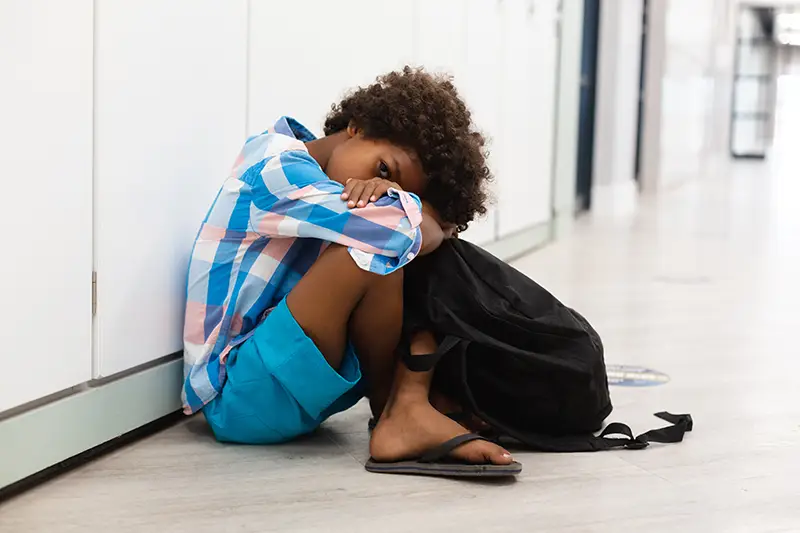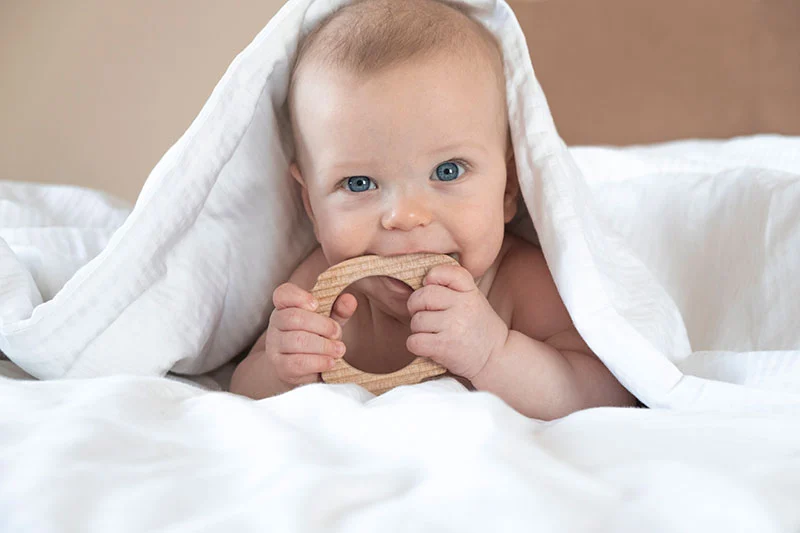
Children, just like adults, frequently find themselves feeling anxious, nervous or worried about many things. While much of the anxiety a child feels is completely normal and will go away on its own, there are times when a normal worry grows into a larger problem, which can have an adverse impact on your child’s social-emotional and behavioral health.
Let’s face it: We live in a nervous time with political unrest, media sensationalism and images of distress and conflict bombarding us throughout the day. Estimates are that as high as 30% of our young people have experienced significant symptoms of anxiety since the pandemic; and those numbers seem to be on the rise.
Children experience anxiety differently at different ages. Preschool children may experience separation anxiety from their primary caregiver and become clingy or overly dependent. During the elementary years, a child may develop worries about attending school or taking tests. They may feel anxious about their teachers, fear of being bullied or being lonely. Some children experience distress when faced with new social settings and the increased academic demands placed on them as they move through the school system. Middle and high school kids may complain of the pressures related to social media as well as the need to function more independently with growing expectations placed on them by their parents and the school system. Children who have experienced a traumatic event or who experience conflict within their family are more prone to anxiety.
Young children who are anxious may not have the verbal skills to understand or express what they are experiencing and may instead become irritable, have difficulty sleeping, report having bad dreams, or complain of stomach aches or headaches. Older children might manifest anxiety by struggling to concentrate, having anger outbursts, engage in negative self-talk, or avoid everyday activities such as seeing friends or going to school.
Helping an anxious child first begins with listening and validating their feelings. Emphasize that talking about problems is a good thing. Demonstrate through your actions that feelings, while not always pleasant, will give way to less intense feelings with time and understanding. The goal isn’t to eliminate anxiety, but rather help the child manage it. It can help to practice breathing techniques, muscle relaxation, physical movement and role-playing anxiety inducing situations in the child’s life. Preparing your child for change before the change happens can bring about a sense of control and comfort. Look for books, movies, or television programs that will help them understand their feelings and help them realize it’s OK to feel anxious or worried. Challenge unhelpful thinking by posing worst case vs. best case or most likely case scenarios. Offer the anxious child opportunities to face smaller challenges in a safe setting with the goal being to expand smaller challenges to larger challenges in different settings. If they get stuck, remind them about the success they’ve had in the past and use those same skills to overcome their current obstacle. Success in small tasks translates into success with larger, more difficult tasks which ultimately results in a greater sense of self-esteem and resiliency.
Finally, when should a parent or caregiver worry about their child’s worries? Simple answer…when it interferes with their ability to handle everyday situations or forces them to avoid things that most children their age enjoy. Should this occur, caregivers are encouraged to seek support from the professional community. School personnel are keenly aware of children and their needs and are a wonderful source of support and information. Your child’s primary care provider can offer insight and advice on the various medical options which are available to treat childhood anxiety. Investigate what mental health supports are available in the community and seek treatment from a qualified counselor/therapist. Above all, keep talking to your child. In the end, as is the case with most things, on-going communication is the key to your child’s behavioral health.
– Dave Miner is a licensed professional counselor for Health West in Pocatello, ID. He works with elementary-aged patients through a partnership with School District 25.








